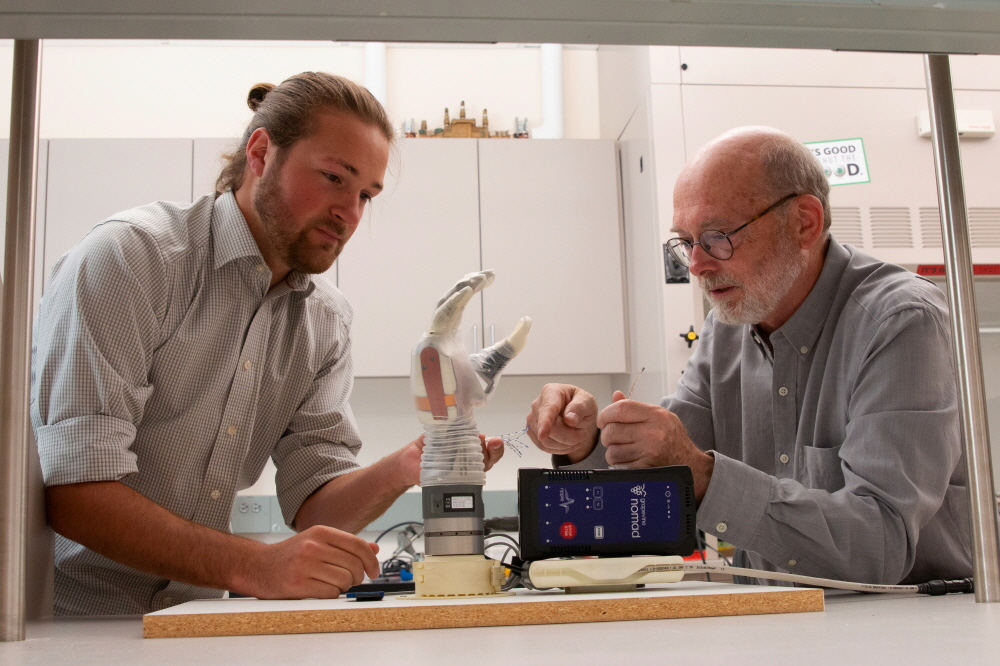
The prosthetic hand Luke, developed by a research team at the University of Utah, is named after Luke Skywalker, the star of Star Wars, who lost his right hand during a fight with his father. The most important feature of this prosthetic hand is that even a person who has undergone amputation can feel the touch. Those who have lost their sense of touch at the same time as their hands or arms have not been able to restore their sense of touch even with a prosthetic arm.
Of course, there have been no attempts to regain touch through the prosthetic arm. However, there was a problem of only reproducing the extremely limited sense of touch and sometimes transferring the sense of touch by mistake. In this respect, Luke transmits the sense of touch obtained through an innovative prosthetic hand directly to the brain. It is said that electrical signals are transmitted to the brain through rooks such as eggs and grapes, and the brain can directly control force regulation.
According to the research team, the participant in the clinical trial was moved to tears when they felt the sense of touch that they felt irreversible after wearing the rook for the first time in 2017. He lost his hand and part of his arm in an accident 17 years ago.
Luke was developed over 15 years by a research team at the University of Utah and DEKA Research & Development led by Segway developer Dean Carmen. This prosthetic is used by connecting an external battery and a computer.
The University of Utah research team developed an interface that connects the prosthetic arm to the user’s neural circuit and named it USEA (Utah Slanted Electrode Array). This interface directly connects the prosthesis to the brain by inserting hundreds of electrodes with nerve fibers through surgery. Through the USEA, it is possible to transmit movement to the prosthesis as expected and to control the prosthesis with one’s own will.

As an analogy, explaining that inserting electrodes into the body is like having an intimate and independent conversation with a few close friends but in a room. On the other hand, putting the electrodes outside your body is like standing outside a large stadium and yelling out loud at people. Even if the person inside the stadium responds, it can only convey the crowd to the person outside.
Participants in clinical trials inserted USEA into their bodies through surgery in 2016 and went to university research institutes for 14 months to challenge clinical trials. It is said that if you run USEA with a rook attached, you not only feel the touch when you touch it with rook, but you also know whether it is an object or soft. Thanks to the sensitivity, it is now possible to easily perform high-difficulty movements, such as picking up grapefruits one by one or putting up a fragile box and putting a pillow inside the cover.
But what the research team paid attention to was his emotional reaction. When asked if he wanted to do something else during the experiment, he said he simply wanted to hold his hand. As he said, holding the hand with the rook on, the participant said that he may have become completely conscious of himself for the first time since he lost his hand in an accident. Based on the results of these experiments, the University of Utah research team published a paper in the journal Science Robotics.
Luke is an excellent prosthetic arm, but he has limitations. The nerve fibers that move the human arm are far more numerous than the USEA electrodes. It is said that it is impossible to reproduce this perfectly. However, there are many benefits to the patient when the sense of touch returns even a little. It may be possible to relieve the frequency or symptoms of flatulence. The research team is planning to improve the design as the next step. It plans to create a mobile version of Luke and start developing home devices. There is also a desire to increase the safety and usefulness of users by wirelessizing the USEA electrode.
It takes more than a few years at the earliest for Luke to be commercialized. However, if these advanced prosthetics are sold in the future, it is clear that they will be of great help to patients in need. Related information can be found here .


















Add comment